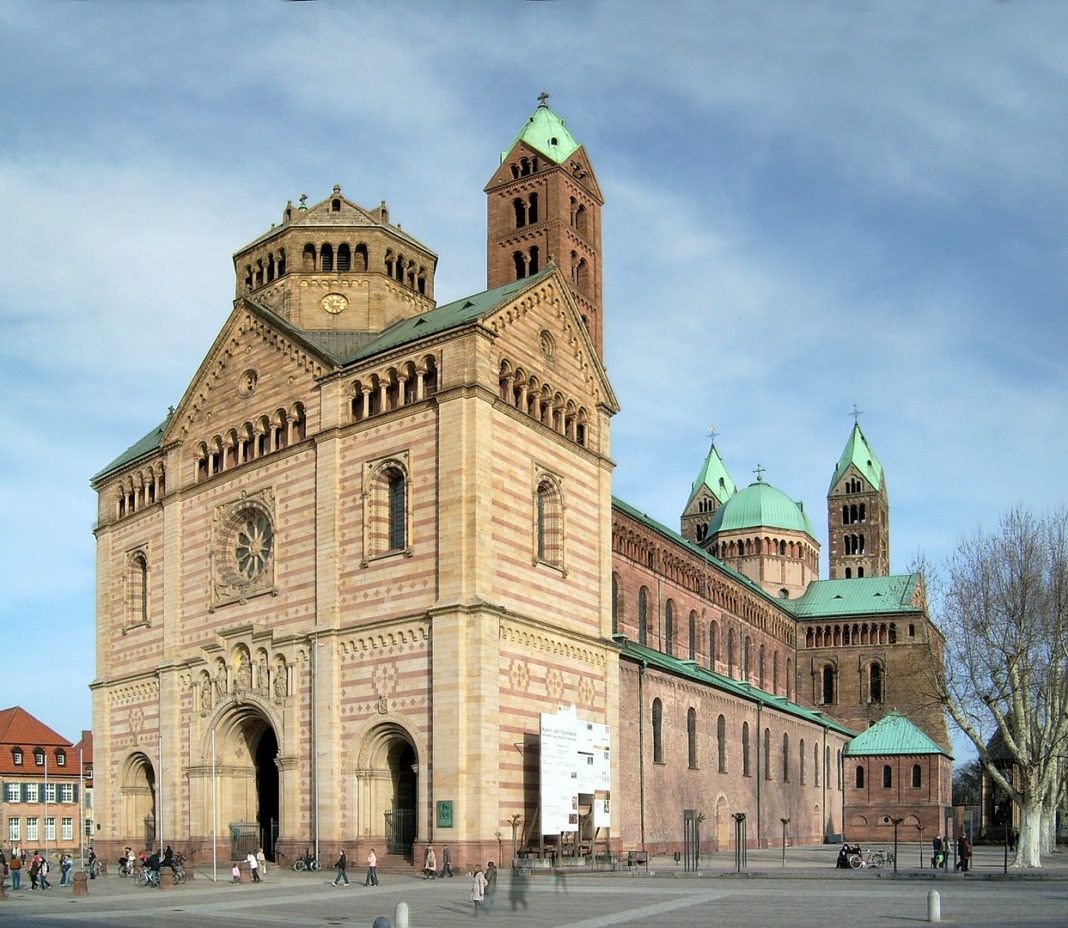Speyer Cathedral, officially the Imperial Cathedral Basilica of the Assumption and St Stephen, in Speyer, Germany, is the seat of the Roman Catholic Bishop of Speyer and is suffragan to the Roman Catholic Archdiocese of Bamberg. The cathedral, is dedicated to St. Mary, the patron saint of Speyer (“Patrona Spirensis”), and St. Stephen is generally known as the Kaiserdom zu Speyer (Imperial Cathedral of Speyer). Pope Pius XI raised Speyer Cathedral to the rank of a minor basilica of the Roman Catholic Church in 1925.
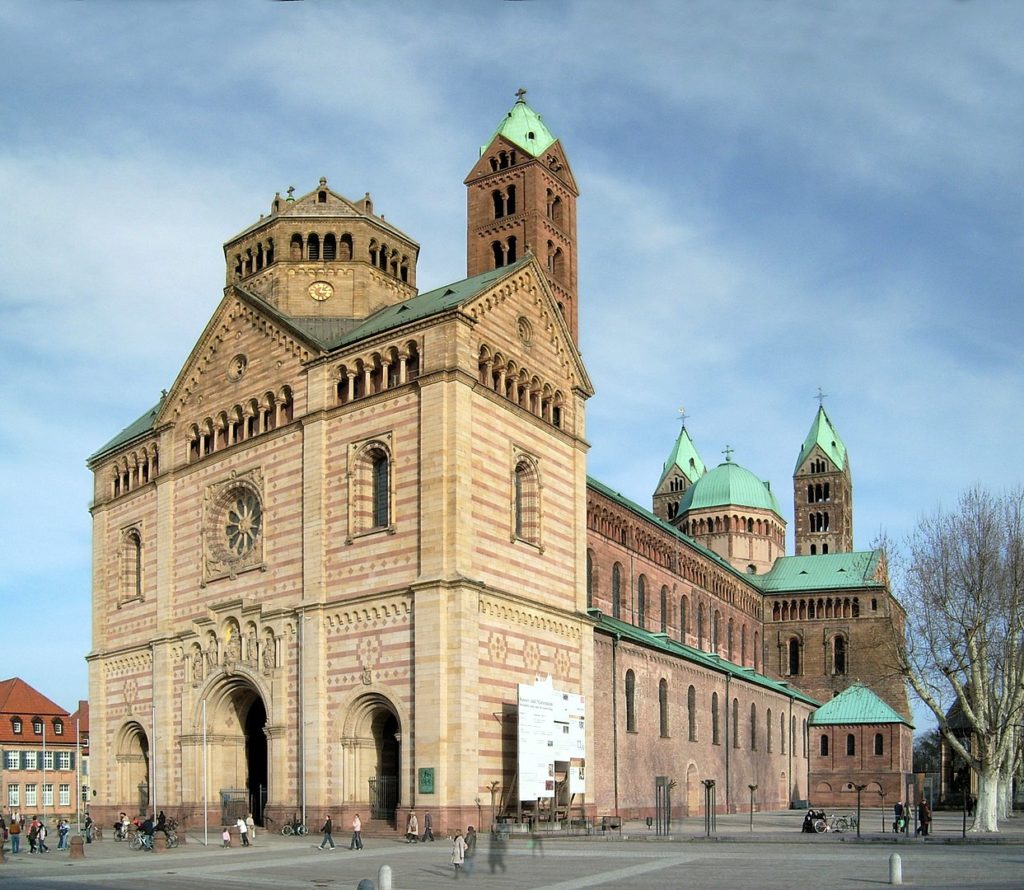
The Cathedral is an expression and self-portrayal of the abundance of imperial power during the Salian period (1024 – 1125) and was built in conscious competition with the Abbey of Cluny as the building representative of the papal opposition.
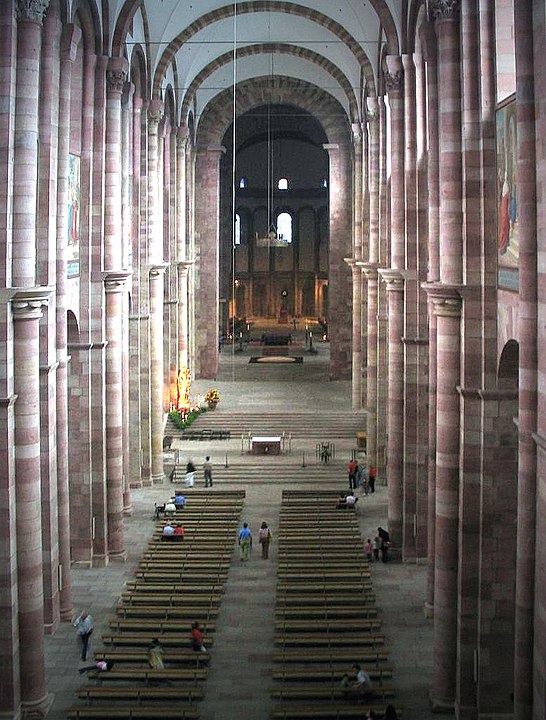
In its size and the richness of its sculptures, some created by Italian sculptors, it stands out among all contemporary and later Romanesque churches in Germany, and it had a profound influence on the pattern of their ground plans and vaulting. Today – after the destruction of the Abbey of Cluny – Speyer Cathedral is the biggest Romanesque church in the world. Likewise, its crypt, consecrated in 1041, is the biggest hall of the Romanesque era. No less than eight medieval emperors and kings of the Holy Roman Empire of the German Nation from Konrad II to Albrecht of Habsburg in 1309 were laid to rest in its vault. In 1689 the Cathedral was seriously damaged by fire.
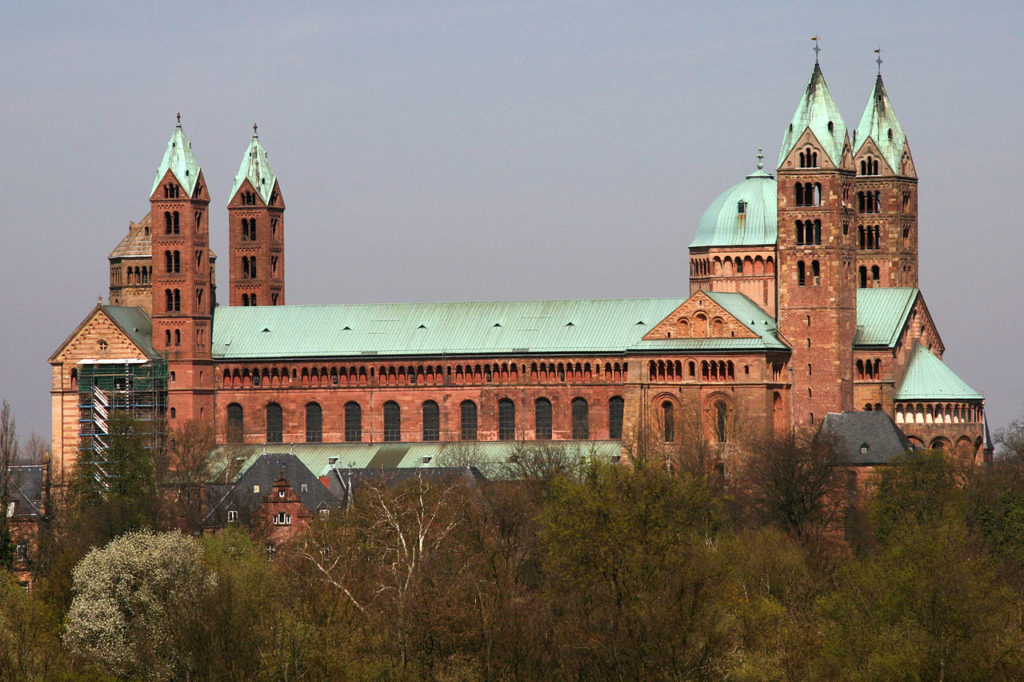
The reconstruction of the west bays of the nave from 1772 to 1778, as an almost archaeologically exact copy of the original structure, can be regarded as one of the first great achievements of monument preservation in Europe. The westwork, rebuilt from 1854 to 1858 by Heinrich Hübsch on the old foundations, is by contrast, a testimony to Romanticism’s interpretation of the Middle Ages, and as such an independent achievement of the 19th century. Commissioned by the Bavarian King Ludwig I., the interior was painted in late Nazarene style by the school of Johannes Schraudolph and Josef Schwarzmann from 1846 to 1853.
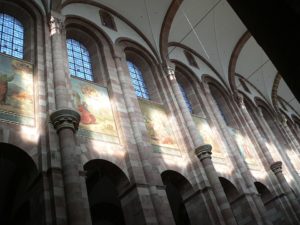
Romanesque architecture is an architectural style of medieval Europe characterized by semi-circular arches. There is no consensus for the beginning date of the Romanesque style, with proposals ranging from the 6th to the 11th century, this later date being the most commonly held.
According to Wikipedia/UNSECO





